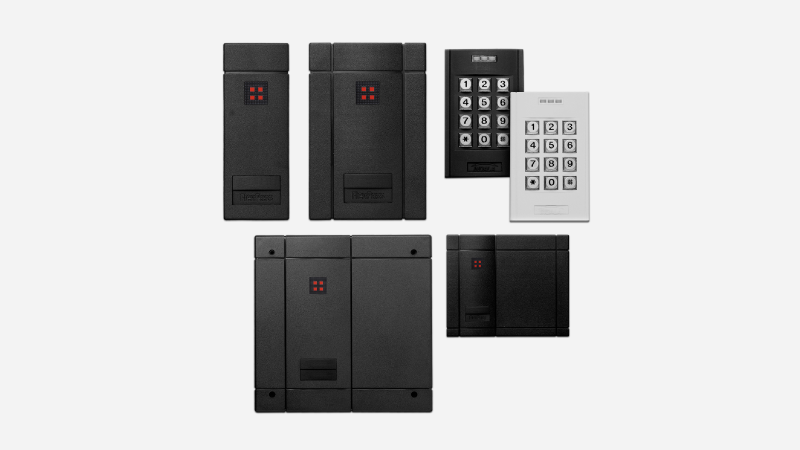

Proximity readers continuously transmit a low-level fixed radio frequency (RF) signal that provides energy to the card. When the card is held at a certain distance from the reader, the RF signal is absorbed by a small coil inside the card that powers up the card’s microchip which contains a unique identification code. Once powered, the card transmits the code to the reader. The whole process is completed in microseconds. The big advantage of proximity over other technologies lies in its simplicity. There are no moving parts, no mechanical wear, no slots, and no read heads to maintain. The reader can be concealed inside walls or special enclosures and poses even fewer problems when surface-mounted because it has no opening with which to jam or tamper. The proximity card is extremely secure and practically impossible to duplicate. Proximity cards are less prone to physical damage or loss, saving you money in reduced card replacement costs. Read ranges depend primarily on the reader. The larger the read range, the larger the reader’s concealed antenna and, hence, the size of the reader. A reader’s read range is always specified using standard cards. If the card’s coil is smaller, as in thin photo ID cards, keytag or keytag type cards, it may reduce the read range by up to 40%. There is a great variety of proximity readers designed for different environments including vandal resistant mullion mounts, smaller decor styles, and integrated keypad/reader units.